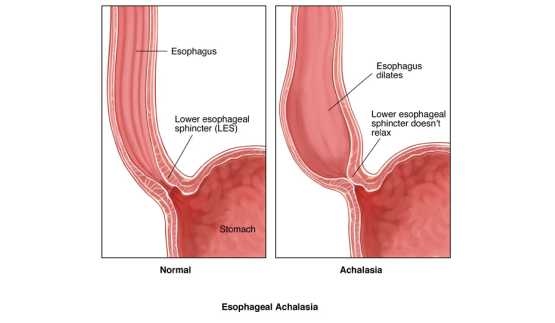Achalasia is a motility disorder of the esophagus muscle and or the lower esophageal sphincter (LES). Normally, this muscle relaxes when you swallow to allow food to pass into the stomach. In people with achalasia, it does not relax as well. In addition, the normal muscle activity of the esophagus (peristalsis) is reduced.
Achalasia is usually characterized by difficulty swallowing, chest pain, GERD, coughing, weight loss and vomiting. Due to Achalasia’s common symptoms it is often misdiagnosed as GERD, hiatal hernia or psychosomatic.
How is Achalasia Diagnosed?
- Upper GI
- EDG (esophagogastroduodenoscopy)
- Esophageal Manometry
Achalasia Treatment:
All of the treatments currently used to treat achalasia relax the contraction of the sphincter between the stomach and esophagus. This allows food to pass more easily into the stomach. Available Achalasia treatments include:
- Botulinum toxin injection
- Drugs (i.e., nitrates or calcium channel blockers). While they do help some patients, overall they are not very effective.
- Achalasia balloon dilation
- Heller’s myotomy is a surgery to cut the muscle between the stomach and esophagus
Further information on Achalasia here.

